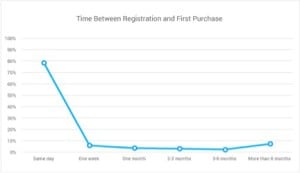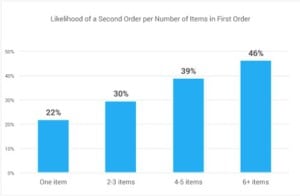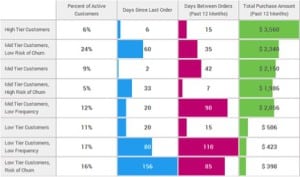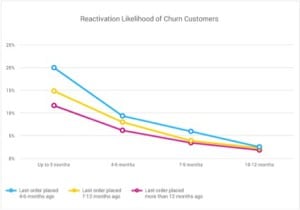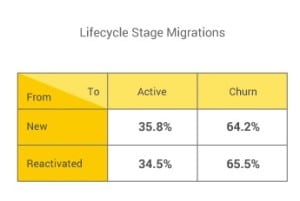To forge stronger relationships with their customers, online retailers must understand the distinct lifecycle stages that shoppers go through. Whether they’re just starting to browse a new site or they’ve been loyal customers for years, shoppers leave behind much valuable data that marketers can leverage to develop customer marketing campaigns that effectively engage, monetize and retain each distinct shopper persona.
Managing your customer relationships based on lifecycle stages is a powerful way to increase engagement and loyalty. Deploying data-driven retention campaigns improves your ability to engage, monetize and retain customers, resulting in long-lasting customer relationships and an improved bottom line.
We broke down the five main lifecycle stages of the online shopper in order to shed light on what makes these shoppers tick and to explain how you conduct smarter, more targeted marketing campaigns.
Stage #1: The Browser
Description:
Potential customers who recently started browsing a site, registered as a member, or signed up for an account, but have yet to make any purchases.
Insight:
Our data shows that 80% of all customers make their first purchase with an online retailer the same day they register for an account or provide their email address. 7% of shoppers will make their first purchase within a week of registering, but after that your chances of converting them drop significantly.
Action:
As a retailer, your objective during this period is to get the shopper to become a customer by making their first purchase within seven days. It’s important to get them to do so as quickly as possible. Leverage the data you have on browsers who have given you their email address—referral source, initial product interest, other browsing data and more—to deliver targeted, custom campaigns and promotions on popular items that have attracted similar shoppers.
Stage #2: The New Customer
Description:
Customers who completed their first purchase on your site.
Insight:
More than half of all New Customers will never make a second purchase on your site. That’s the bad news. The good news is that most of the customers who make a second purchase will go on to make a third, and that their chances of becoming loyal customers continue to climb with each subsequent purchase. Also, the likelihood of them making more purchases in the future goes up based on the number of items bought in their first order.
Action:
Knowing these facts, your goals should be to (A) get New Customers to make a second purchase, even if it’s an inexpensive item or a loss-leader, and (B) try to increase the number of items they order during their first purchase, perhaps by recommending related items or offering special discounts on impulse items.
Stage #3: The Active Customer
Description:
Customers who have made multiple purchases, and are not considered as churned due to a lengthy period of inactivity
Insight:
You should further segment your Active Customers using RFM (Recency, Frequency and Monetary) clustering. This helps reveal who your highest-value and lowest-value customers are, which customers are at high risk of churning, and more.
Action:
It is critical to understand the different types of Active Customers and to deliver your engagement campaigns based on their RFM profile. In the sample RFM chart below, the “Mid Tier, High Risk of Churn” group has a very high risk of churn because it’s been 33 days since their last order, yet they usually place an order every seven days. These customers would benefit from a tailored marketing campaign to encourage them to re-engage.
Stage #4: The Churned Customer
Description:
Active Customers who haven’t made a purchase beyond a specified factor of the average number of days between their past orders.
Insight:
On average, 20% of customers who made their last purchase between four and six months ago will reactivate within three months. However, the more time that passes, the harder it is to get Churned Customers to re-engage.
Action:
Churned Customers can be the easiest to re-engage with proper marketing efforts, because not only do you have customer data that can help you target them effectively, but you have a pre-existing relationship that makes it easier to get their attention. It is important to use the data you have to segment your Churned Customers into small groups based on their previous activity levels, past shopping behavior and other data.
Stage #5: The Reactivated Customer
Description:
Customers who had previously been considered churned, but who have since returned to complete another purchase.
Insight:
Our data shows that the future value for Reactivated Customers is very close to that of New Customers. Similarly, Reactivated Customers tend to remain active at a nearly identical rate to that of New Customers (35% for Reactivated Customers compared to 36% for New Customers within the same time period). However, your window of time for re-incubating these customers is limited.
Action:
You should conduct marketing and engagement campaigns to Reactivated Customers just as you would to New Customers, since they exhibit similar spending and retention behaviors. Give your Reactivated Customers special treatment such as exclusive offers and bonuses in order to maximize the lifetime value of this extremely valuable customer segment. Just be sure to do so quickly—once they’ve reactivated, you have a limited opportunity to turn them back into active shoppers.
Pini Yakuel is Founder & CEO of Optimove.
